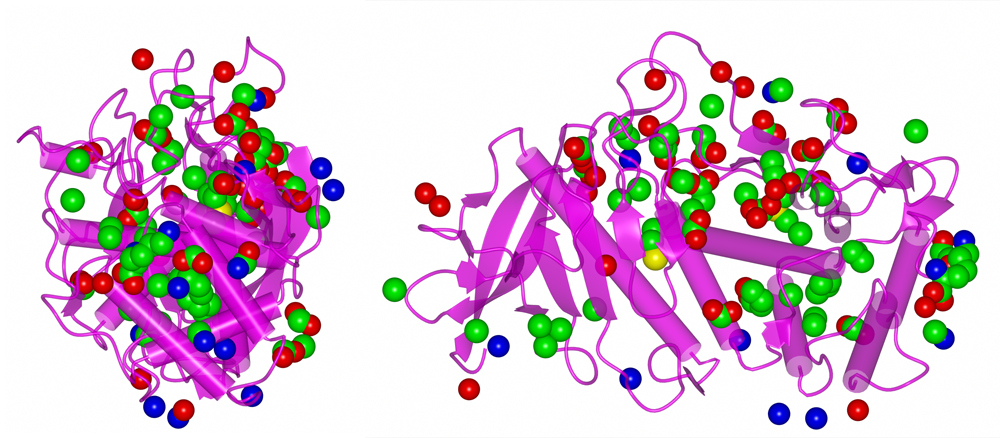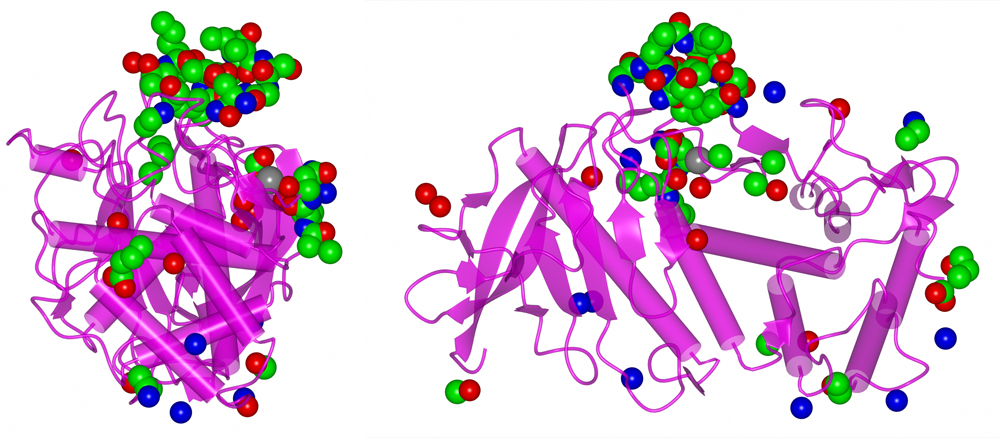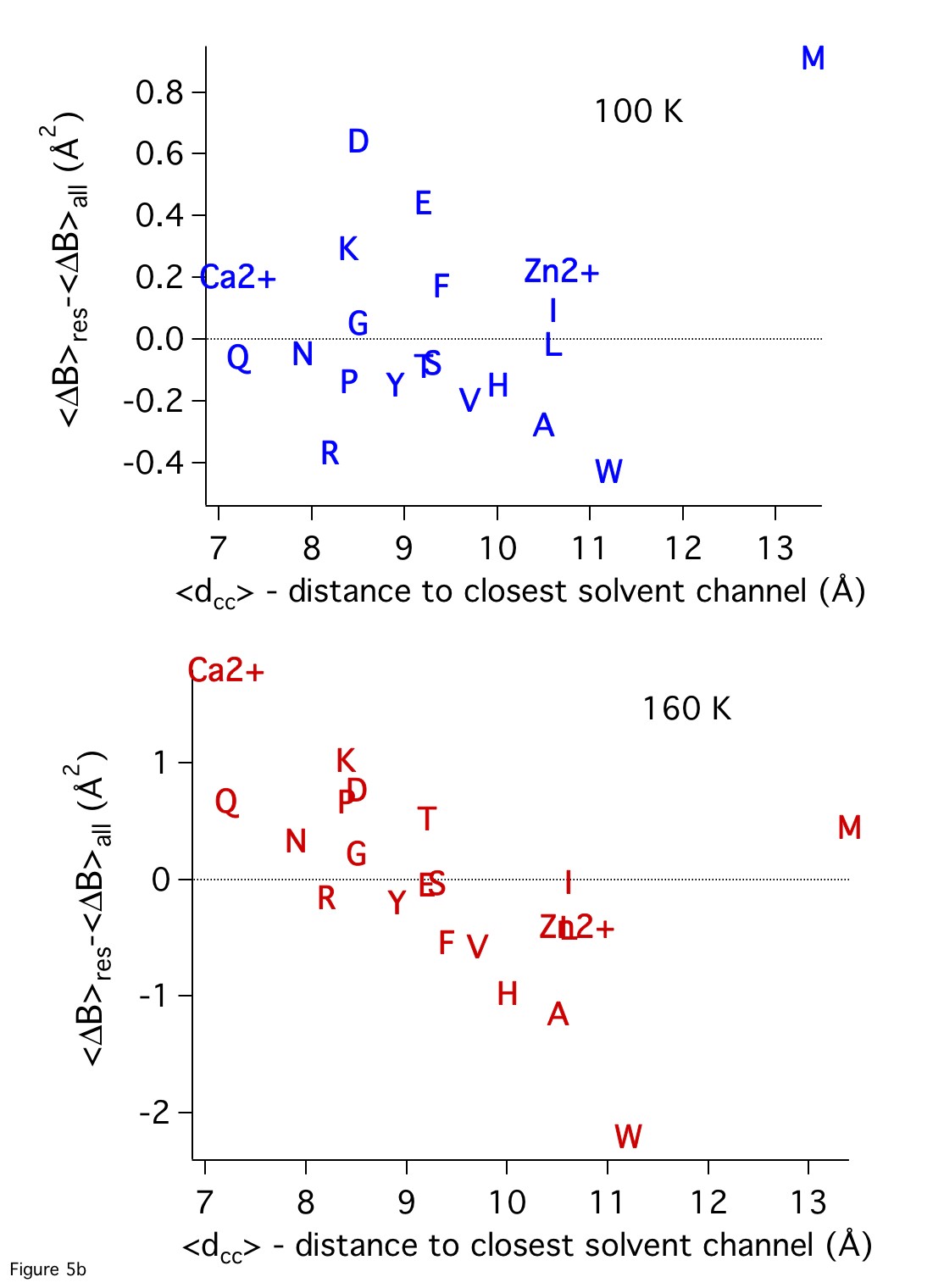Dependence of
radiation susceptibility on residue depth (or distance to nearest
solvent channel)
as measured with
map_channels.
The top graph shows that at 100 K, there is not a strong correlation
between the susceptibility and the residue depth.
The bottom graph, at 160 K, shows a stronger correlation.
This implies "protection" from the effects of radiation for residues
further from solvent channels at 160 K but not at 100 K.




